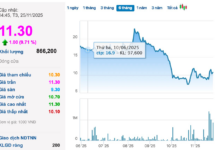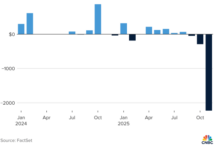Unraveling the Land Valuation Conundrum
Land pricing is becoming a significant bottleneck in the real estate market. A year after the implementation of the new land price framework following the enactment of the 2024 Land Law, businesses have pointed out several challenges. These include officials’ fear of legal risks, leading to hesitation in decision-making and subsequent project delays.
In some cases, even after a price agreement is reached, there are requests for recalculation, resulting in additional payments of up to hundreds of billions of dong, increased costs, and project stagnation. Moreover, land prices are sometimes determined based on inflated auction results, inadvertently legitimizing artificial prices. This drives up land lease costs and diminishes investment appeal.

What role does the state play in land governance? In reality, the state simultaneously assumes the roles of “landlord,” macro-manager, and market participant in land administration. Photo: Le Vu |
The sharp increase in the new land price framework has also created a psychological effect in the market. Many landowners, especially those with residential land, use the excuse of “state-increased prices” to hike their selling prices, making it challenging for those with genuine housing needs to afford properties.
Another issue is the significant disparity between agricultural land and residential land prices. While residential land prices have been adjusted to approach market rates, agricultural land prices remain largely unchanged. This has led to a substantial increase in the cost of converting agricultural land to residential use, with some cases seeing a tenfold increase compared to previous rates. For households intending to build their homes, the new tax burden is almost equivalent to a significant portion of the market value of the land.
According to independent real estate expert Le Quoc Kien, the 2024 Land Law stipulates the annual creation of a land price framework, which is not only resource-intensive but also creates considerable risks for businesses. In reality, with 12 months in a year, local authorities spend more than half of that time discussing and developing a new price framework, hindering efficient management.
The proposed amendment suggests returning to a five-year cycle for issuing the land price framework to ensure long-term stability. Simultaneously, to stay abreast of market trends, the state can apply an annual land price adjustment coefficient (coefficient K). Essentially, this mechanism does not differ significantly from creating a new price framework each year but will significantly streamline the workload and reduce the burden on local authorities.
Policy stability is especially crucial for real estate projects that typically span five to seven years. If land costs fluctuate continuously or are subject to retroactive collection, as has happened in the past, businesses will be at a disadvantage, directly impacting project schedules and investment appeal.
Businesses Reformulate Financial Strategies
Regarding Article 158 of the draft amendment to the 2024 Land Law, representatives from Bcons Real Estate Company shared that while the state’s role in determining land prices ensures transparency and curbs price manipulation, it also makes land costs unpredictable. This unpredictability poses challenges for financial planning and long-term investment strategies. To cope, businesses have no choice but to develop multiple financial scenarios instead of relying on a fixed number to mitigate risks and maintain project feasibility.

Projects targeting young families have recorded strong transaction levels in the old Binh Duong Province. Photo: Hoang An |
Additionally, the company acknowledged that the mechanism for land retrieval upon achieving 75% consensus would resolve bottlenecks in land clearance, reducing the risk of capital escalation and shortening preparation time. However, they emphasized the need for transparency and humanity in the compensation, resettlement, and support processes to ensure genuine consensus and facilitate timely project implementation.
Ms. Pham Thi Mien, Deputy Director of the Institute for Vietnam Real Estate Market Research (VARS IRE), concurred that the two new proposals—allowing state support for land retrieval when businesses reach an agreement with over 75% of households and abandoning the “market price” principle in land valuation—could have positive effects on project development.
From a business perspective, the 75% consensus mechanism would alleviate significant obstacles in land clearance, streamline preparation time, and mitigate the risk of capital escalation. Simultaneously, moving away from the rigid “market price” principle would be advantageous if accompanied by a transparent framework based on actual market data. This would enable businesses to forecast land costs more accurately and develop effective financial plans and business strategies.
However, the impact on end-users depends on the implementation. If the initial land costs are determined transparently, there could be an increase in supply, contributing to a reduction in housing prices. Conversely, a lack of clarity could drive up land costs, causing selling prices to soar beyond their actual value and diminishing affordability for average homebuyers.
Real estate expert Duong Dang Phuc offered a nuanced perspective on the 75% consensus mechanism for land retrieval. He noted that in practice, it would be challenging to avoid disputes in areas where some households solely reside, while others have established long-term businesses. Forced relocation in such cases could lead to conflicts due to the loss of livelihoods and the need for time to stabilize new living and working arrangements.
Therefore, in addition to the consensus percentage, the land retrieval mechanism should be closely tied to transparent, humane compensation, support, and resettlement policies to foster genuine consensus. This dual approach would ensure project progress while maintaining social stability.
Bcons representatives emphasized that the 2024 Land Law draft provides a clearer and more stable legal framework, aiding in long-term land fund strategy formulation. However, in the short term, input land costs may fluctuate, exerting pressure on product prices and compelling businesses to optimize technology in design, construction, management, and operations to balance expenses.
From a long-term perspective, businesses anticipate project timelines to shorten due to the 75% consensus mechanism and clearer procedures. The flexibility in land lease payments, along with the distribution of land costs over time, will alleviate financial burdens and facilitate efficient cash flow management. Moreover, a transparent legal framework will attract investment and foster collaboration with foreign investors, enhancing competitiveness and market expansion.
Representatives from Nam Long Real Estate Company expressed hope that the amended Land Law would motivate developers of affordable housing projects to enter the market. Specifically, transparent land price adjustments and support in land clearance would encourage enterprises to assemble initial land funds.
Additionally, just as adjustments are made to real estate taxes for businesses, clear regulations and reduced financial obligations from 100% to 70% or 30%, depending on the case and purpose, are necessary for individuals and entities utilizing land resources. Some developed countries offer incentives such as preferential interest rates, credit, and land area allowances for companies developing low-cost housing projects.
Hoang An
– 10:00 25/08/2025
“Unleashing the Power of the ‘Invisible Hand’ in the Real Estate Market”
“Home ownership remains an elusive dream for many, with current income levels struggling to keep up with the rising costs of living and property prices. This is according to Mr. Le Hoang Chau, Chairman of the Ho Chi Minh City Real Estate Association (HoREA), who highlights the growing disparity between the haves and have-nots in the city’s vibrant property market.”
Can Handwritten Contracts Lead to Official Land Ownership Papers?
Effective August 1, 2024, a land-use rights transfer that does not comply with legal regulations but bears the signatures of relevant parties must be accompanied by documentation of land-use rights as stipulated by law. This applies to transfers that occurred prior to the aforementioned date and have not yet received their red book certification.













































